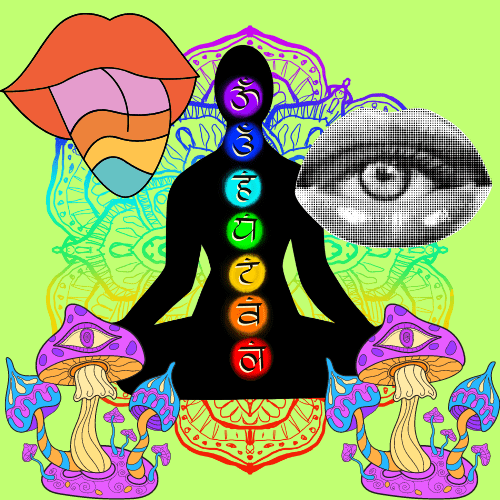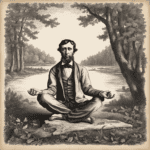

From last week we fast forward to the generation that really brought Vedic philosophy into mainstream America, the baby boomers. Although a lot of early American identity borrowed from concepts found in Indian philosophy and adapted it as an undercurrent along with Protestant-Christian thought, for the most part, any connection was largely under the surface until the boomer’s fascination with India took full force. Similar to the aftermath after the American Revolution, the generation following WWII was looking for new ideas, and concepts, and turning away from conventional institutions.
Especially in America already valued individualism and a direct spiritual connection between the individual and a god, once Vedic ideas made their way into mass media it was very easy to jump on board. Through the 1950s this was already happening, many of the first people showing up to speeches led by Indian gurus were middle-class, buttoned-up adults with the normal American nuclear family a decade before it became “hip”. Aldous Huxley had been studying Vedantic philosophy since the 1930’s and his famous book about his psychedelic trip was published in 1954. coining the phrase “the doors of perception” that would later be shorted for the band name “The Doors”. Aldous Huxley would be one of the first but definitely not the only to group together the “mind-bending” powers of meditation with new psychedelics.
In the decades following WWII – the age-old question of religion, “if there’s a god, why do bad things happen?” was increasingly difficult to answer. During the Cold War where nuclear destruction was a very real threat, conventional religion wasn’t providing the answers. In April of 1966, the Time Magazine cover was just the three words, “Is God Dead?”
Vedic philosophy doesn’t require one to jump on board with a benevolent god or convert to a new religion; it’s about finding the good within oneself rather than in the world. Additionally, meditation was being talked about as a results-driven method; the benefits included being more energetic, happier, and more productive. Most of all the sentiment that, “if we want to change the world, we must change the individual” spoke to an American “up by the bootstraps” and “do-it-yourself spirituality” that works with American culture and a growing counter-culture youth wanting to create change.
As the 1960s drudged on, the mantra of LSD which was “turn on, tune in, drop out” was beginning to be met with skepticism and fatigue by a disillusioned audience. While meditation and drugs were somewhat both greeted as “mind-altering” the drug use had a dark side while meditation was harmless. Those who were serious enough to attend lectures of gurus were repeatedly admonished for their drug use by Indian spiritual leaders. At a 1967 Madison Square Garden lecture by one of the most popular gurus, Maharishi, Allan Ginsberg took the mic from the guru to say, “there wouldn’t be all these people sitting around here listening to you if it wasn’t for LSD.”
By the time The Beatles found Vedic spirituality, they weren’t the only ones looking for a non-drug solution to find happiness. The Beatles’ pilgrimage to India to meditate with Mia Farrow, Donavon, and others was their most productive period where they wrote several hits, and Ringo wrote his first song. Even though The Beatles left India abruptly among concerns that their guru was being inappropriate with Mia Farrow and other female followers (claims later denied), they returned to the West with a new message that meditation is more effective than drugs with none of the overdoses.
The efficiency of meditation has always inspired the west towards the east. Meditation requires no start-up costs. It doesn’t ask for a religious conversion, donations, attending sermons, or dietary restrictions – it fits into every lifestyle.


